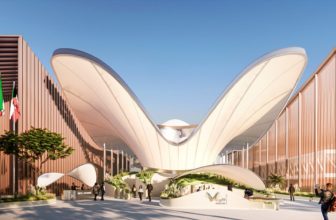MIT’s “Placelet” Project Uses Latest Technology for Urban Planning
Urban designers require constant feedback from users – the citizens – to create quality public spaces. The feedback, however, often comes in the form of data regarding the space itself or the environmental factors such as light, wind, pollution and noise. Up until now, surveys were conducted on site and lacked concrete information or emphasis on the human experience. With a 35,000 grant from Knight Prototype Fund, MIT Media Lab‘s research group led by Elizabeth Christoforetti, urban and architectural designer at MIT Media Lab, are now working on “Placelet” – a project focused on implementing alternative survey techniques for studying urban space.
The project focuses on tracking pedestrian and vehicle movement over a long period of time with the help of a network of sensors. These will also monitor the “sensory experience” by collecting data on the noise level and air quality. According to Christoforetti, the speed of movement is directly related to the quality of the space. “If you imagine a busy urban square, where there are large groups of people sitting down and chatting, that probably means it’s a good social experience”, she mentions. Movement speed could also be an indicator of existing problems. She adds: “However, if you have skinny sidewalks, or people are rushing through there because maybe they’re scared about their safety, then that space probably could use some improvement.”
Sensors have already been installed in Boston. By collecting data on people and cars moving as groups, researchers will be able to create an interactive map which will help both communities to visualize how different interactions develop over time and city planners to anticipate problems and design better solutions.
The study of human behaviour is a strong tool for city planning – one that specialists have been aware of since the ’70s. Information used to be gathered by “counting” – a basic technique used by urbanists, such as late William Whyte, who installed cameras to monitor urban space interactions. Although “Placelet” will not provide urban planners with specific insight on pedestrians’ body language or personal impressions on urban areas, the new technology could be indispensable for an efficient data collection on movement and interaction in public space.
By: Ana Cosma






